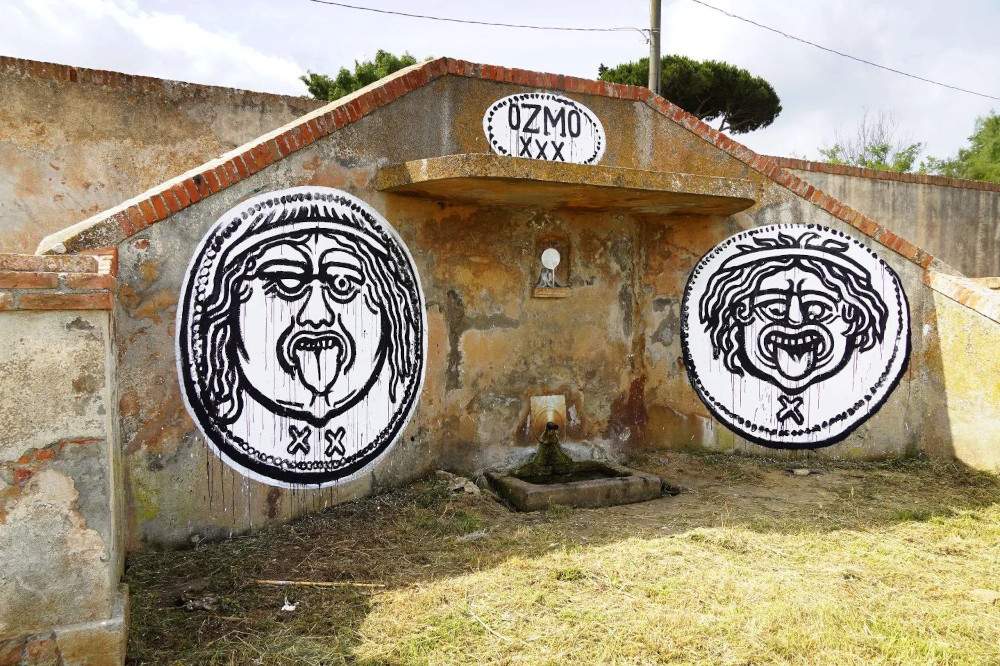The well-known Pisan street artist Gionata Gesi, aka Ozmo, made a site-specific intervention on the night of June 24-25 at the San Cerbone spring in Baratti, which had been abandoned to decay for years. He painted there two of the more than five hundred silver coins that are part of the Treasure of Populonia, now on display at the Etruscan Museum of Populonia - Gasparri Collection.
The Treasure was discovered by workers in 1939, in a ceramic pot, during excavations for the recovery of ancient iron slag in the Gulf of Baratti, at Poggio della Porcareccia. Upon learning of the discovery, Tommaso Gasparri tracked down the discoverers and, with a small monetary compensation, had the coins they had divided up delivered to him. The hoard was then reassembled and Gasparri handed it over to the Superintendent of Etruria Antiquities. Five hundred and sixty-five coins were recovered, almost all of them silver didrachms with the depiction of Medusa, an iconography typical of Etruscan coin production in Populonia and minted here in the second half of the fourth century B.C. After being studied, the treasure was divided between the state and the Società Populonia Italica, owner of the land in which the find occurred. Today the treasure is partly kept in the Monetiere of the National Archaeological Museum in Florence and partly, merged into the Gasparri Collection, is displayed in the Etruscan Museum of Populonia.
Although unauthorized, Ozmo’s intervention was well received. “Ozmo’s intervention,” said the director of the Etruscan Museum of Populonia Carolina Megale, "is a synthesis of the role that archaeology should have in contemporary society: a dialogue between past and present, a tool for reflection in historical heritage management policies, and a reinterpretation of the past by new generations."
The work symbolically looks toward the sea, with which the Etruscans formed a very close bond. Ozmo, reads a note, “returns this place rich in historical and semantic stratifications to the ancient people, thanks to his new site-specific work, which opens a dialogue between the present time and the remote past of the site.”
 |
| Populonia, Ozmo turns treasury coins into a work of street art |
Warning: the translation into English of the original Italian article was created using automatic tools. We undertake to review all articles, but we do not guarantee the total absence of inaccuracies in the translation due to the program. You can find the original by clicking on the ITA button. If you find any mistake,please contact us.